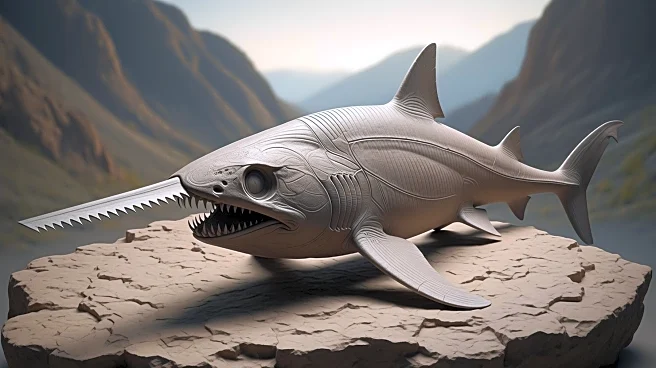What's Happening?
The Cretaceous–Paleogene (K–Pg) mass extinction event, occurring approximately 66 million years ago, is recognized as one of the most significant biological crises in Earth's history. This event led to the extinction of nearly
75% of all species, including non-avian dinosaurs, and initiated a major reorganization and evolution of life. Recent advancements in analytical techniques and interdisciplinary approaches have renewed interest in studying the K–Pg boundary. Researchers are invited to contribute original articles, reviews, and perspectives that explore the multifaceted aspects of this extinction event, focusing on marine and terrestrial records, sedimentology, geochemistry, paleontology, and stratigraphy.
Why It's Important?
Understanding the K–Pg mass extinction is crucial for comprehending the mechanisms behind large-scale extinction events and the resilience of life. This research can provide insights into how ecosystems recover and reorganize after such crises, offering valuable lessons for current biodiversity challenges. The study of this event also contributes to our knowledge of evolutionary dynamics and the factors that drive the emergence of new species. By examining the K–Pg boundary, scientists can better understand the interplay between extinction and evolution, which has shaped the trajectory of life on Earth.
What's Next?
The ongoing research into the K–Pg mass extinction is expected to yield new findings that could reshape our understanding of extinction dynamics and ecosystem resilience. As scientists continue to explore this period, they may uncover new evidence that challenges existing hypotheses or supports emerging theories. The collaboration between different scientific disciplines will likely lead to more comprehensive models of how life adapts and evolves in response to catastrophic events.
Beyond the Headlines
The study of the K–Pg mass extinction not only enhances our understanding of past events but also informs current conservation efforts. By learning how life has historically responded to environmental changes, researchers can develop strategies to mitigate the impacts of modern-day challenges such as climate change and habitat loss. This research underscores the importance of preserving biodiversity and maintaining ecosystem stability in the face of ongoing environmental pressures.











